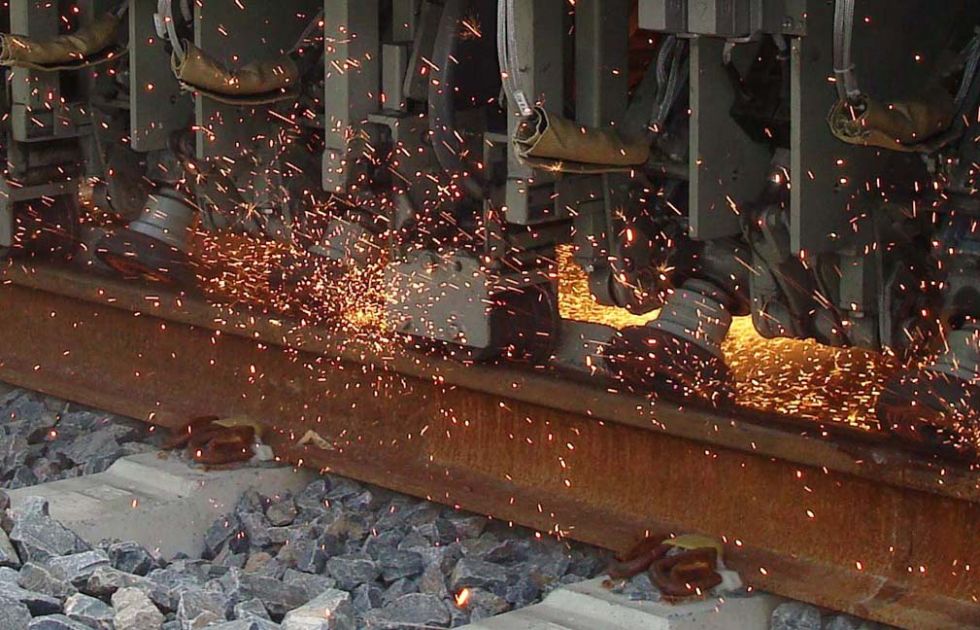 For grinding service, Ram Rail uses mobile grinding technology whose specifications reply in a flexible manner to specific requirements of several railway networks and their operating companies. L&S grinding technologies enable a technically optimal and economically efficient machining of a large range of rail types with gauges between 760 and 1600 mm.
For grinding service, Ram Rail uses mobile grinding technology whose specifications reply in a flexible manner to specific requirements of several railway networks and their operating companies. L&S grinding technologies enable a technically optimal and economically efficient machining of a large range of rail types with gauges between 760 and 1600 mm.
For the selection of the convenient grinding technic the concrete local conditions are considered, such as the volume of the planned grinding works, the type and degree of wear, duration of traffic break, clearance gauge, track slope, curve radius, presence of obstacles, noise and environmental regulations etc.
Likewise a machining of turnouts is also available.
We would be pleased to assist you and to work out the convenient service concept for you:This email address is being protected from spambots. You need JavaScript enabled to view it.This email address is being protected from spambots. You need JavaScript enabled to view it.">
Thereby different strategies of machining can be offered:
-
Rail Grinding
New Rail Grinding
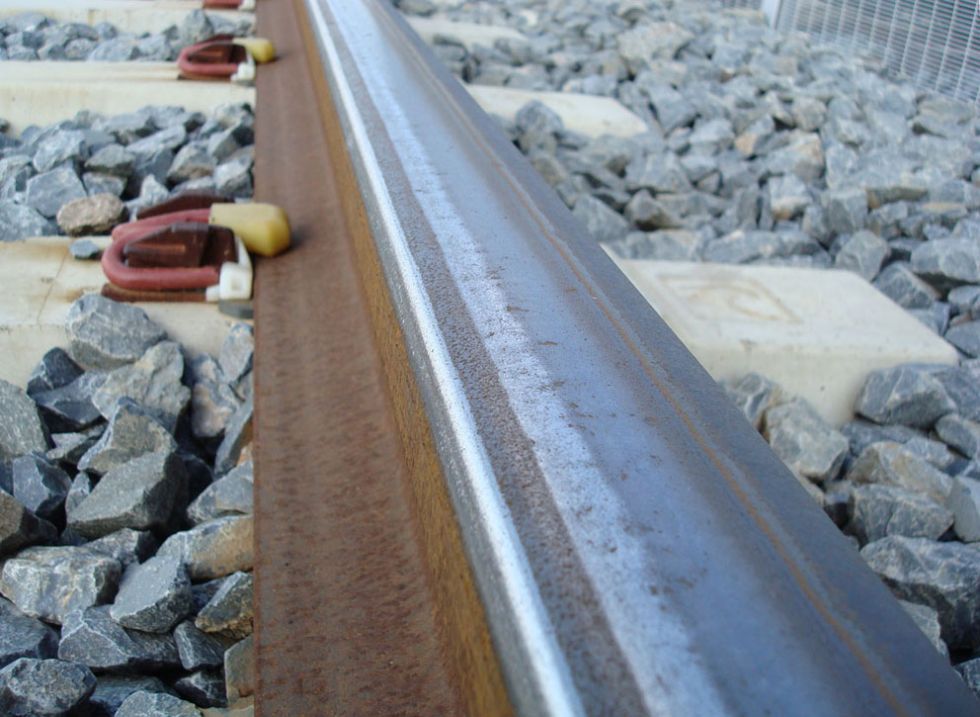 When grinding new rails, before starting up the rails or as soon as possible thereafter, the differences produced by the rolling process in the production of rails in the surface structure (low-carbon and carbon-rich sites) are eliminated by the removal of the top layer randentkohlten. In addition to the production of a homogeneous surface of the driving head simultaneously possible damage to the driving surface through the construction site, welds, camp-related surface rust and deviations are processed to the required rail head nominal cross section. In addition, the processing intervals are extended due to the delay defect formation.
When grinding new rails, before starting up the rails or as soon as possible thereafter, the differences produced by the rolling process in the production of rails in the surface structure (low-carbon and carbon-rich sites) are eliminated by the removal of the top layer randentkohlten. In addition to the production of a homogeneous surface of the driving head simultaneously possible damage to the driving surface through the construction site, welds, camp-related surface rust and deviations are processed to the required rail head nominal cross section. In addition, the processing intervals are extended due to the delay defect formation.Preventive Grinding
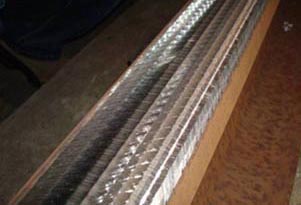 When preventive loops rail defects, such as head checks, checker and undulations or high profile deviations fought in the early stages of their creation. This is achieved by the removal of the hardened and brittle rail surface, for which relatively little removal depths and fewer passes are necessary. The safety and life of the rail is greatly increased, prevent noise emissions and poor ride comfort while reducing the cost per finished meters opposite the corrective grinding.
When preventive loops rail defects, such as head checks, checker and undulations or high profile deviations fought in the early stages of their creation. This is achieved by the removal of the hardened and brittle rail surface, for which relatively little removal depths and fewer passes are necessary. The safety and life of the rail is greatly increased, prevent noise emissions and poor ride comfort while reducing the cost per finished meters opposite the corrective grinding.Corrective Grinding
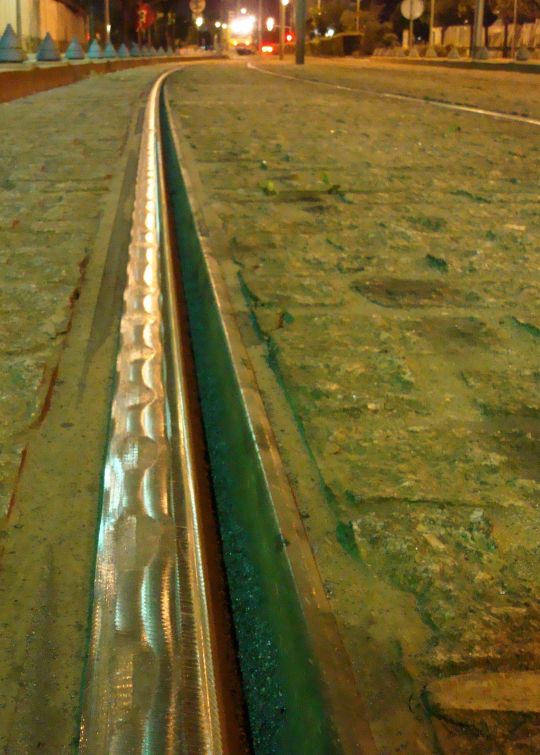 Corrective grinding is used to enable worn or given Schienenkopflängs- and -querprofile in the required target values to eliminate rail defects such as Laps or sample and produce special profiles.
Corrective grinding is used to enable worn or given Schienenkopflängs- and -querprofile in the required target values to eliminate rail defects such as Laps or sample and produce special profiles.For this, the desired radii are produced on the rail head by adjusting the angular position of the individual axes grinding module and the associated production of grinding facets again. The grinding facets thus generated are kept as small as possible in order to get as close as possible to the required destination profile.
Producing of special profiles
In some cases, it may, for reasons of driving safety, for the prevention of rolling contact fatigue and particular stress, velocity, or wear situations be important to take special rail head profile to use. Such slip strategies are used, inter alia, in the anti-head-check processing, the production of asymmetrical rail profiles in highly congested areas and bow at track corrections.
-
RRGM 1-20
The rail grinder RRGM 1-20 is a rail-road going machine. The machine has 20 grinding spindles with independent angular adjustment. They are driven by 15 kW frequency-controlled electrical motors. The computer monitored grinding process is controlled with touch pad by the operator inside of the cabin. The rail grinder can be used for removing of rolling skin, the elimination of rail corrugations (grooves) and short waves on the rail head as well as for reprofiling of the rail head. The grinder RRGM 1-20 is efficient for working in the open and closed scopes of long rail sections for winning the transverse and longitudinal target profiles as well as for automatic machining of obstacles and turnouts through adequate pre-program of local conditions.
Insertion time on rail: approx. 12 minutes
Discharging time of rail: approx. 8 minutesThis machine is only available for service.
-
RRGM 0-16
The rail grinder RRGM 0-16 is a rail-road going machine. The machine has 16 grinding spindles with independent angular adjustment. They are driven by frequency-controlled electrical 7,5 to 15 kW motors. The computer monitored grinding process is controlled with touch pad by the operator inside of the cabin. The rail grinder can be used for removing of rolling skin, the elimination of rail corrugations (grooves) and short waves on the rail head as well as for reprofiling of the rail head. The grinder RRGM 0-16 is efficient for working in the open and closed scopes of long rail sections for winning the transverse and longitudinal target profiles.
Insertion time on rail: approx. 8 minutes
Discharging time of rail: approx. 4 minutesThis machine is only available for service.
-
RRGM 1-6 / AM65
The RRGM 1-6/ AM 65 is a road-rail going grinding machine for the machining of the rail head of tracks and turnouts. It composes except the grinding wagon also a generator so that no power cables has to be installed along the working site. The grinder can travel flexibly to the position for rail-in und easily rail in and out by road-rail technology.
The RRGM 1-6/ AM 65 has 6 grinding spindles with independent angular adjustment. They are driven by 15 kW frequency controlled electrical motors. The grinding process is monitored automatically. The machine can be equipped with an integrated laser measurement system for the analysis of the transverse and longitudinal rail head profile.
The track and turnout grinder RRGM 1-6/ AM 65 can be used for removing of the rolling skin, the elimination of rail corrugations (grooves) and short waves on the rail head as well as for the re-profiling of the rail head. The grinder is efficient for grinding of turnouts, machining of railroad crossings, grinding of welding, machining of taper rail and for winning the transverse and longitudinal target profiles in short rail sections. -
LRGM 2-12
The LRGM 2-12 is a turnout grinding machine for the machining of the rail head. The machine composes two coupled grinding units LRGM 1-6, each with 6 grinding spindles with independent angular adjustment. They are driven by 15 kW frequency controlled electrical motors. The grinding process is monitored automatically. The machine can be equipped with an integrated laser measurement system for the analysis of the transverse and longitudinal rail head profile.
The composite grinding machine is driven by a coupled generator so that no cables has to be installed along the working site. The grinder can be easily railed in and out with a ramp of a rail vehicle or by crane.
The LRGM 2-12 turnout grinder can be used for removing of the rolling skin, the elimination of rail corrugations (grooves) and short waves on the rail head as well as for the re-profiling of the rail head. The grinder is efficient for grinding of turnouts, machining of railroad crossings, grinding of welding, machining of taper rail and for winning the transverse and longitudinal target profiles in short rail sections.
Rail-in time: CRIO: approx. 10 min. Ladearm: approx. 20 min.
Rail-out time: CRIO: approx. 5 min. Ladearm: approx. 15 min..
-
LRGM 1-6 / AM65
The LRGM 1-6/ AM65 is a turnout grinding machine for the machining of the rail head which composes except the grinding unit also a generator so that no power cables has to be installed along the working site.
The grinder can be easily railed in and out with a ramp of a rail vehicle or by crane.The turnout grinding machine has 6 grinding spindles with independent angular adjustment. They are driven by 15 kW frequency controlled electrical motors. The machine can be equipped with an integrated laser measurement system for the analysis of the transverse and longitudinal rail head profile.
The LRGM 1-6/ AM65 turnout grinder can be used for removing of the rolling skin, the elimination of rail corrugations (grooves) and short waves on the rail head as well as for the re-profiling of the rail head. The grinder is efficient for grinding of turnouts, machining of railroad crossings, grinding of welding, machining of taper rail and for winning the transverse and longitudinal target profiles in short rail sections.
-
LRGM 1-2 / AM16
The LRGM 1-2/ AM16 is a turnout grinding machine for the machining of the rail head which composes except the grinding unit also a generator so that no power cables has to be installed along the working site. The grinder can be easily railed in and out with a ramp of a rail vehicle, by crane or by an assembled lifter
with steering function.The turnout grinding machine has 2 grinding spindles with independent angular adjustment. They are driven by 15 kW frequency controlled electrical motors.
The LRGM 1-2/ AM16 turnout grinder can be used for removing of the rolling skin, the elimination of rail corrugations (grooves) and short waves on the rail head as well as for the re-profiling of the rail head. The grinder is efficient for grinding of turnouts, machining of railroad crossings, grinding of welding, machining of taper rail and for winning the transverse and longitudinal target profiles in short rail sections.
Rail-in time: approx. 10 minutes
Rail-out time: approx. 5 minutes


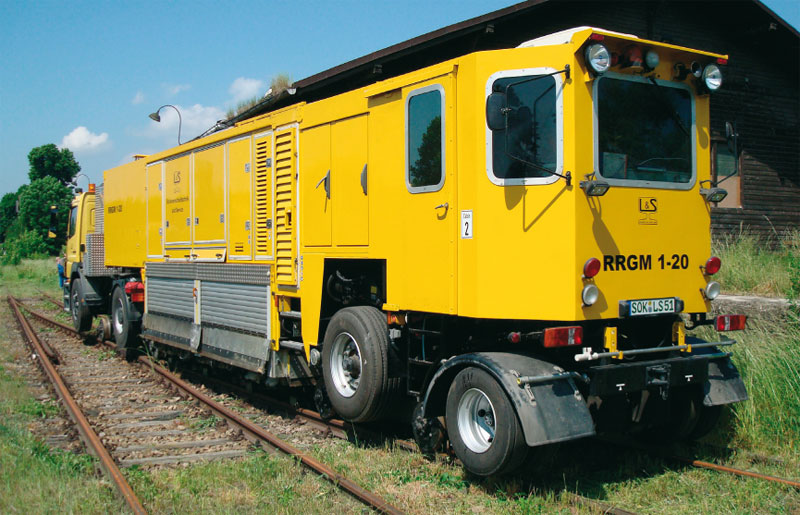
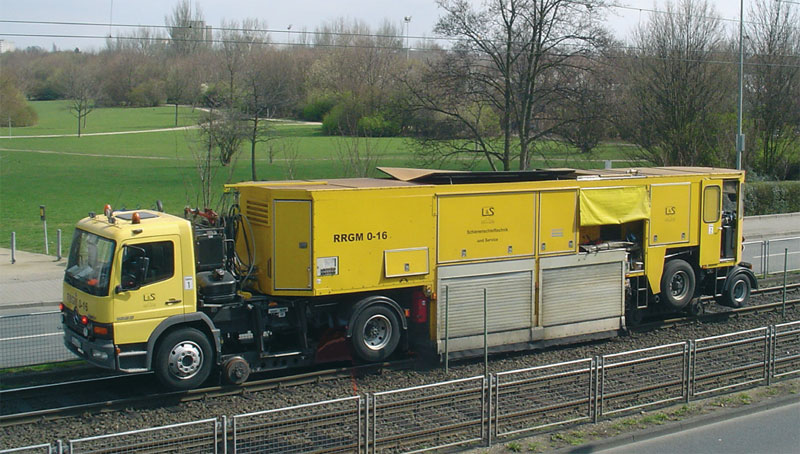
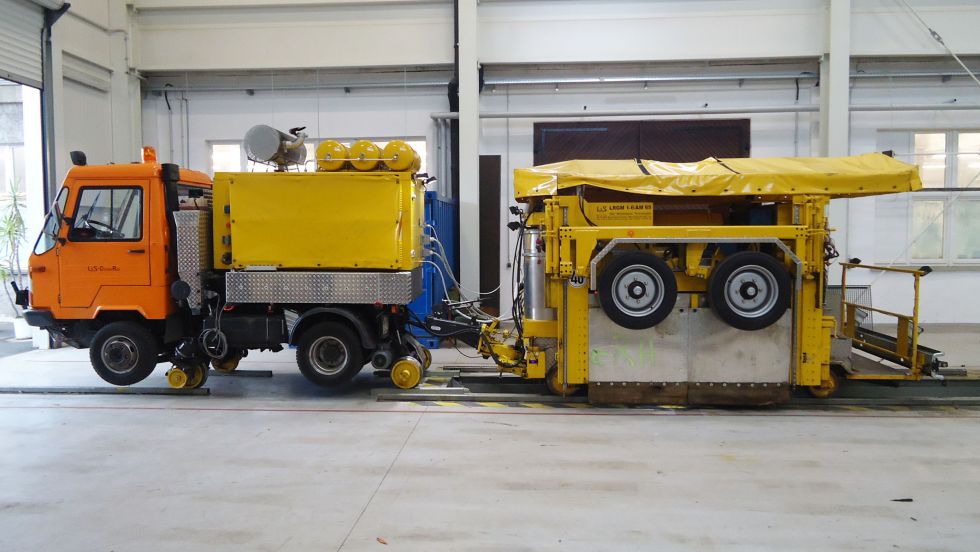
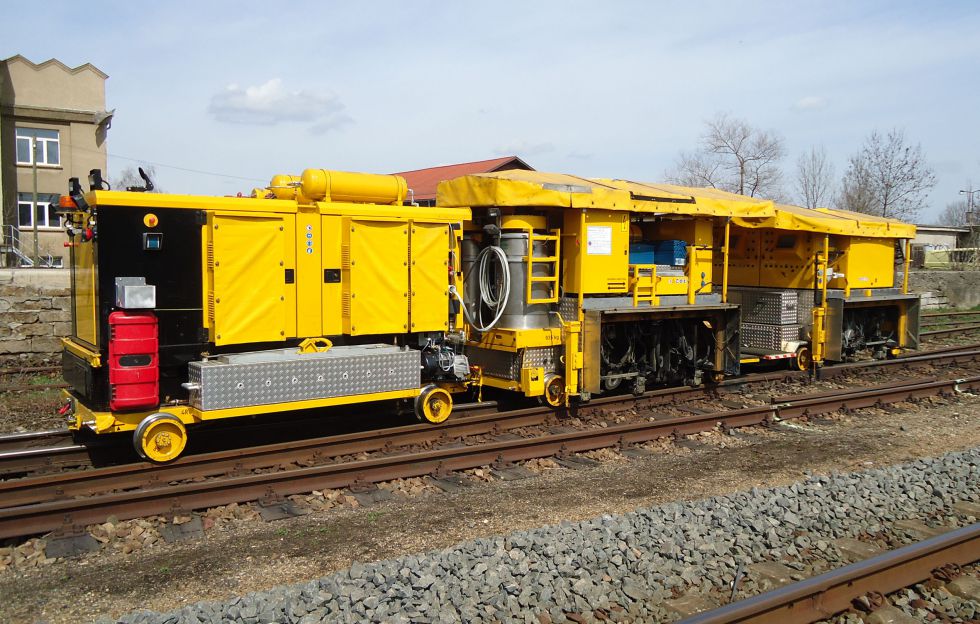
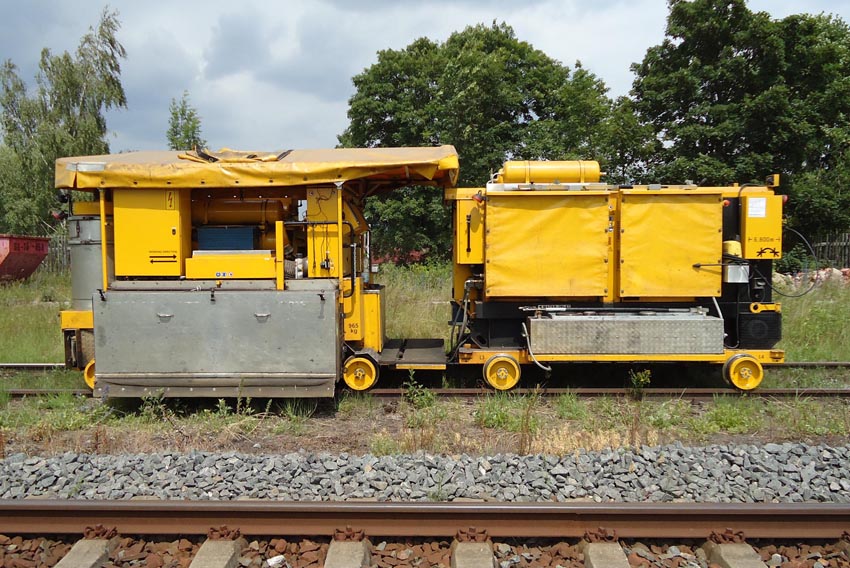
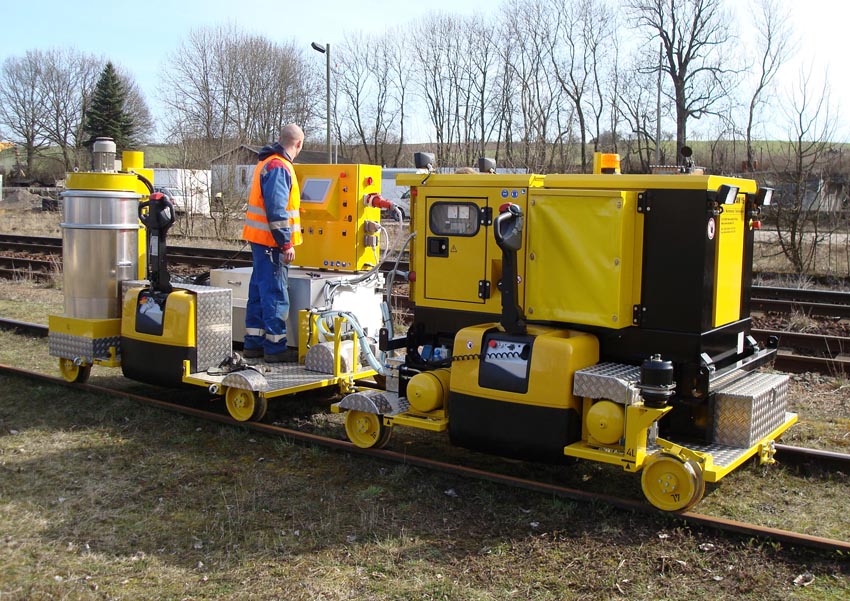



Social Links